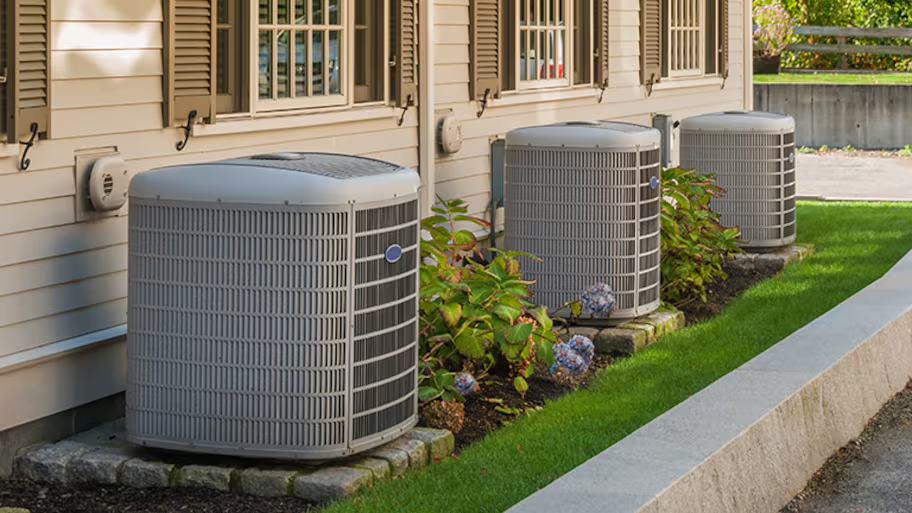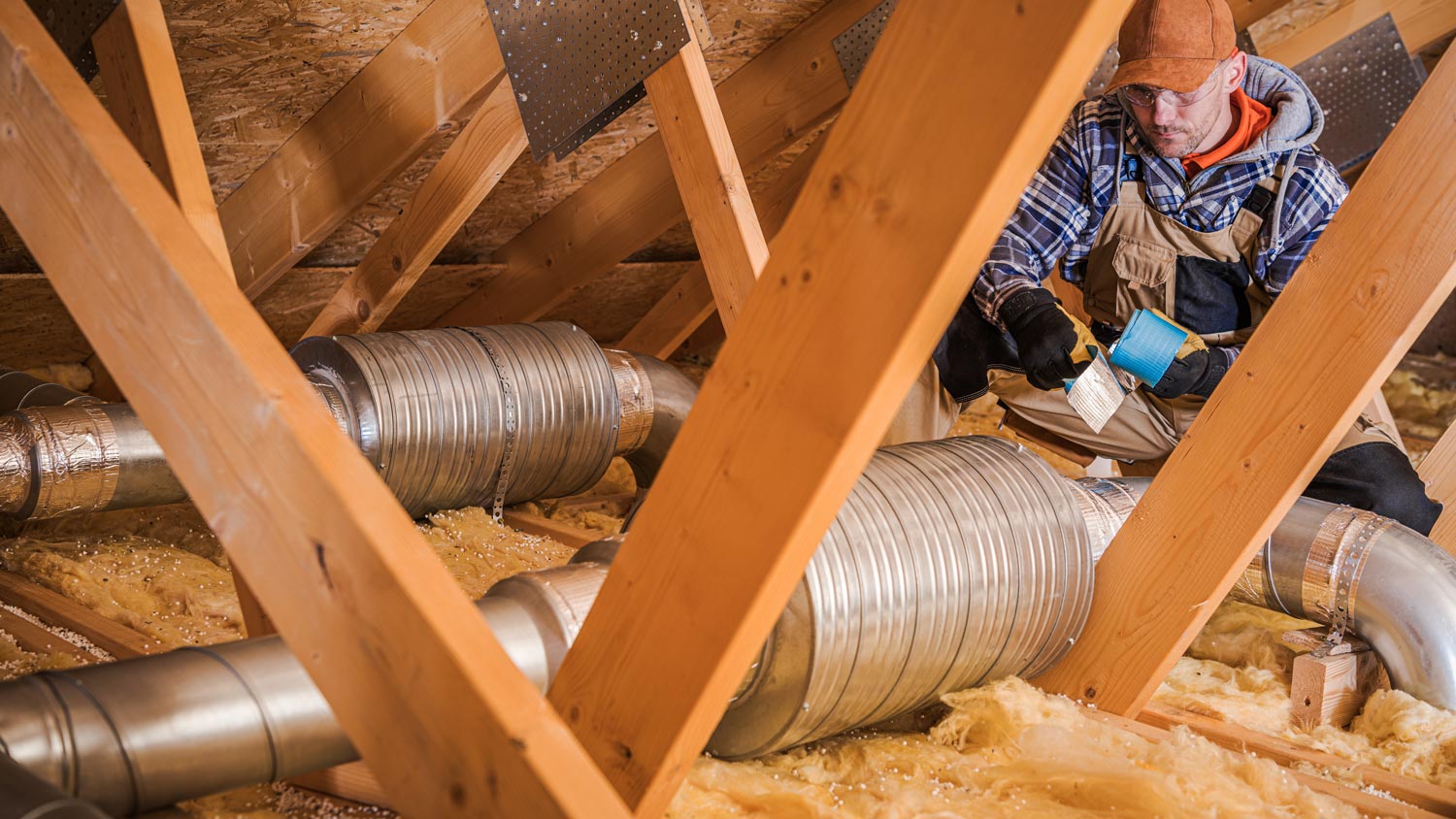
HVAC replacement costs depend on a lot of factors, like unit type, size, and labor. See what you can expect to pay for HVAC replacement here.
If you're not a big fan of your attic, an attic fan could make all the difference


The attic is a temperamental space in your home—pun intended—that has a big say in how hot or cold your living space gets during the year. During the summer, attics can reach around 160 degrees Fahrenheit without proper ventilation and attic insulation.
This is where the attic fan steps in. But like most home technology, it's not a perfect fix for everyone. Let's look at the pros and cons of attic fans and whether they're right for your home.
Just as the name suggests, an attic fan attaches to the roof or dormer of your attic to regulate your home's temperature. Way up at the top of your house, the attic fan encourages proper airflow between the exterior and interior of your home.
In the summer, hot air rises to your attic and exits through the fan, which in turn, pulls in cool air from the outside. When the colder months hit, the fan works to balance the temperature on either side of your roof to discourage condensation. Less condensation means less water damage and mold—which is always a win.
There are several types of attic fans and related costs, from passive fans and turbines to electric and solar-powered attic fans. Some pop on when a thermostat reaches a set temperature, others depend on convection and natural airflow. The average cost to install a fan ranges from $370 to $875, depending on which one you pick.
Dropping nearly $1,000 on an attic fan is nothing to blow past. You'll want to make sure they make sense in your home design before adding one or more to your attic.
Keep in mind that an attic fan will not take the place of your AC or a whole-house fan. An attic fan simply balances the extreme heat and moisture that can build up in this vulnerable attic space.
While it will lend a hand to your AC when used properly, you can encounter a few issues we'll outline below. Let's take a look at pros of attic fans.
Up to 12% of home energy bills go toward air conditioning, according to the U.S. Energy Information Administration. In hot and humid regions like the southeast, this percentage rises all the way up to 27%.
When extreme heat and direct sun hit your roof, insulation can only do so much to keep attic temperatures from rising. Not only is this incredibly uncomfortable when you go up to dig for the Fourth of July decorations, but this heat can affect the temperature of the rest of your home as well.
An attic fan pulls this hot air out of your attic once it reaches a high temperature and sends cool air flowing back in. The simple exchange can regulate the attic air and take the pressure off your AC.
Your attic fan plays another important role in the winter—controlling moisture. During attic inspections, water damage is one of the largest culprits that there's a leak or air exchange issue. Think of this a bit like a cold bottle of iced tea.
If the liquid inside is cold and you drink it on a hot day, condensation quickly begins to drip down the glass. The same goes for your attic. Cold air outside meets the warm rising air inside and small bits of moisture slowly collect on the ceiling, walls, and around the soffits. Moisture can quickly lead to mold, attract insects, and even cause structural damage over time.
Regulating winter attic temperatures is not just about condensation. After a beautiful snowfall, something less beautiful tends to occur. Warm air pent up in the attic escapes through the soffits of your roof and melts the snow on the other side. This can cause icicles, or an ice dam, to form.
Ice dams are often inevitable to some extent, but an attic fan can lower their severity by evening out the temperature in and outside your attic. Smaller ice dams mean less roof damage and potential leaks or even collapses.

It’s not all cool air and mold prevention—there are some downsides to attic fans too. Take a look at three cons below to decide if you want to install an attic fan in your home.
The clever exchange of hot and cold air only works if your attic is properly sealed off from the rest of your home. If it's not, the cold air pumped out by your AC can escape to the attic and out through the fan itself. So be sure to work with an attic insulation company to ensure the fan works in tandem with your AC, not against it.
Installing an attic fan crosses into two tricky territories for DIY projects: sealing the outside of your home and potential electrical hookups. Improperly sealed attic fans or vents can lead to poor performance, leaks, or even pest issues. And electric fans that attach to a thermostat are always best handled by hiring an electrician.
Speaking of water damage, there is one specific type of attic fan that has a reputation for leaks—the attic turbine. These passive styles depend on natural airflow to turn them instead of an electric thermostat. In extreme weather with heavy downpours, water can leak through these turbines, even in small amounts.
Now that you know the pros and cons, you can decide if you’re ready to buy an attic fan. Attic fans are an excellent tool for keeping your home a bit more comfortable, free of unwanted moisture, and more affordable to maintain in the long run.
Hire an attic fan installer to determine the best time, placement, and set up for you and keep it running smoothly with a local attic repair expert.
From average costs to expert advice, get all the answers you need to get your job done.

HVAC replacement costs depend on a lot of factors, like unit type, size, and labor. See what you can expect to pay for HVAC replacement here.

A mini-split allows for zoned cooling, helpful for cooling spaces like garages. Learn the cost to install a mini-split unit in a garage with this guide.

Repairing ductwork in a crawl space is frustrating and difficult, which is reflected in the cost. Learn why limited access results in a premium cost beyond just a simple increase in labor hours.

Forced-air systems provide a reliable source of warmth for your home, but what is forced-air heating, exactly? Let’s break it down.

Learn how to add Freon to your AC unit with our step-by-step guide, and keep your home cool with a properly functioning AC unit.

Thinking about installing a heat pump in your home? Learn about the different types of heat pumps and the options you can choose from in this guide.